When can a child tell the time? Tips & games to stimulate a sense of time
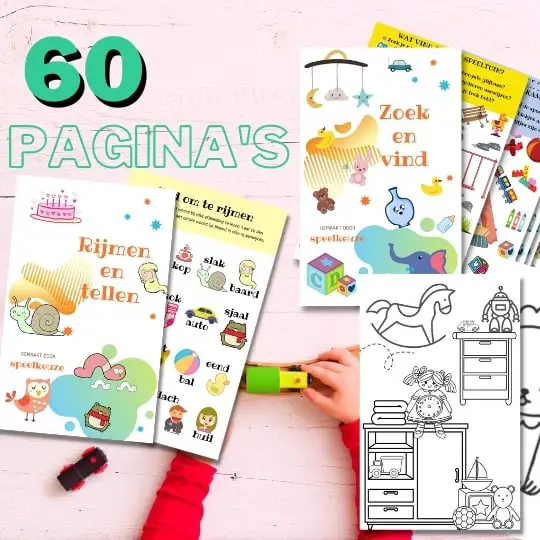
Always something to do for the holidays or rainy day?
Play Choice now has the ultimate activity book collection, with over 60 pages of fun coloring pages and educational puzzles.
Does your little one often ask about the time? Are you wondering if it is time to teach your toddler or toddler to tell the time?
The answer to these questions depends on your child's sense of time and this in turn depends on your child's age.
For my son everything is still yesterday and tomorrow, it doesn't matter if it was 5 months ago what he's talking about :)
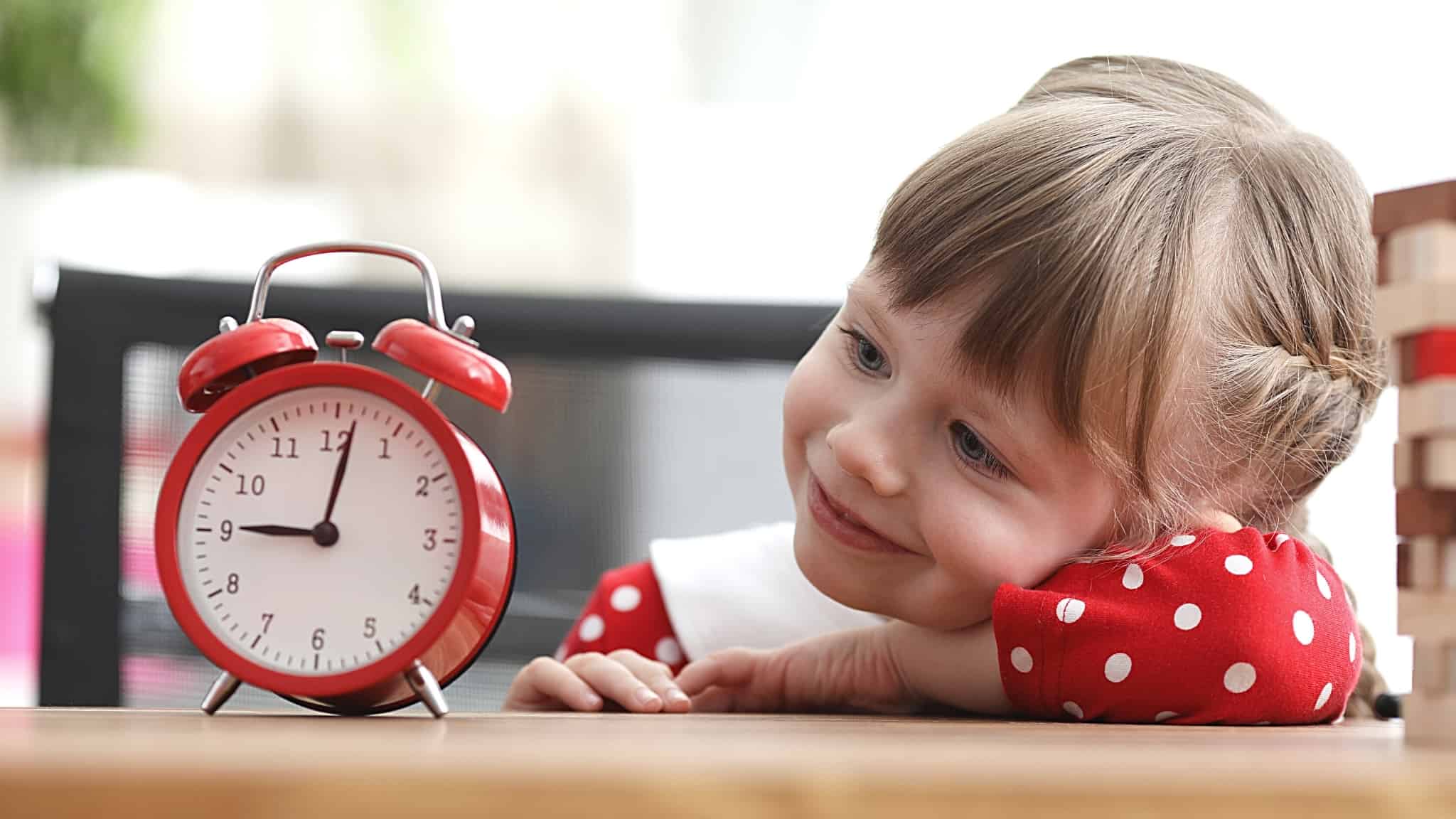
Before a child can tell the time, they must first have developed their sense of time and know today, tomorrow, morning and evening: usually in grades 1-2. From group 3 onwards they can often appoint the whole and half hours. Eclearn to tell the time properly, including digital telling the time, can last until their 5th year.
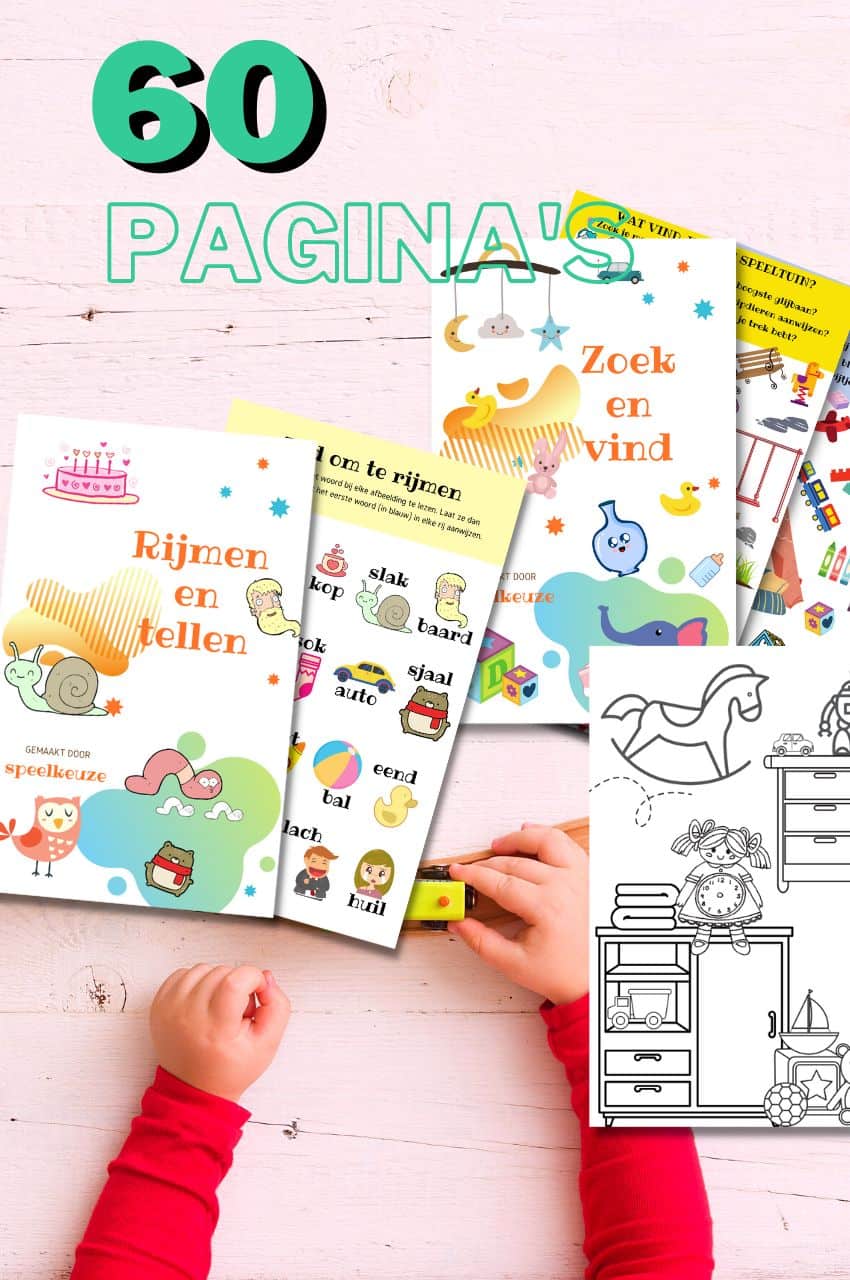
From toddler to toddler activity book collection
Educational games and coloring pages for 3 to 6 years
Your toddler and preschooler will love this e-book, along with the accompanying printables. He or she can play with it at every stage of development, together with mom and dad.
Buy at Bol.comWhat we discuss in this comprehensive post:
What stages are there for learning to tell the time?
To be more precise, the following phases in learning to tell the time can be distinguished:
- In group 1, the sense of time begins with most children, sometimes they already understand the days of the week and maybe the seasons; they are ready to start learning to tell the time!
- In group 2, children can often already understand half-days; for example 'Wednesday morning I go to school and in the afternoon I go to football'. They understand what 'yesterday' or 'tomorrow' means. Some have been appointing hours on a pointer clock.
- In group 3, many children can already appoint whole and half hours on a pointer clock.
- In group 4 many children can appoint quarters and sometimes even 5 or 10 minutes before / after the whole and half. They are ready to get acquainted with a digital clock.
- By the end of grade 5, your child should be able to tell the time: on a hand clock and on a digital clock, he should in principle be able to name the hours and minutes.
Best clock games by age
I list the best clock games for the kitchen table for you, in order of age:
- From 18 months the. In this way, children understand what the terms 'day' and 'night' mean.
- From 2 years old de Melissa & Doug clock, the colors and numbers help your child visualize “quarter past” and “half past”
- From 3 years old is the a very clear one with its bright colors
- From 4 years old paste your situations at certain times, both analog and digital with it educational magnet game from Janod
- From 6 years old the domino clock game: connect the hands to the digital times!
I will discuss in more detail how you can use them to stimulate learning to tell the time.
What can you do at home to teach your child to tell the time?
Would you like to give your child a helping hand in learning to tell the time? Then I'll give you some useful tips, follow these 4 steps and the foundation is laid:
Teach your child a sense of time as soon as possible
Learning to tell the time is not done 1-2-3. The realization of time starts around the age of 4 with concepts such as 'in the morning', 'in the afternoon' or 'in the evening'.
Maybe this is a good tip: the. With these the little ones - from about 18 months - learn when it is day for the bear and when it is night!
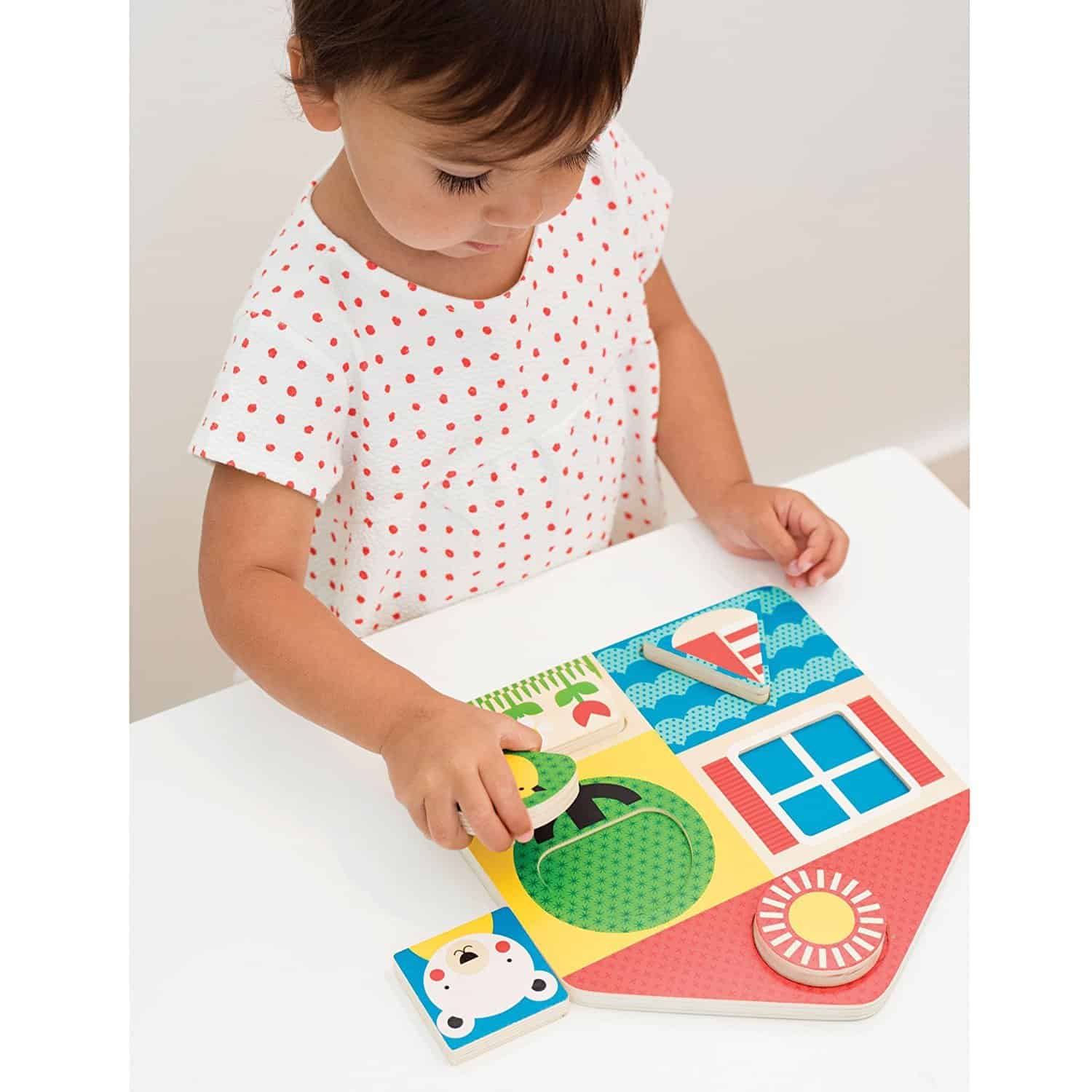
Give your child an educational clock to play with
It is good to purchase a clear clock for your child with which you can play together.
Choose a clock with numbers and dashes for the minutes. Let your child play with the clock and hands.
Look here for a nice leather clock from Melissa & Doug. This clock is already suitable for children from 2 years old. Your child can turn the hands and with the color wheel he or she is helped to visualize “quarter past” and “half past”.
There are 13 double-sided time cards to practice with.
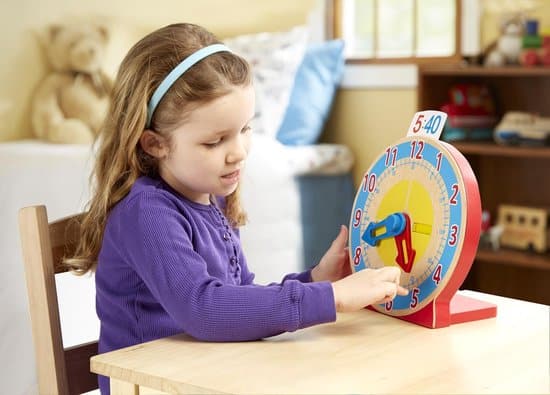
Occasionally mention the time during the day
When it is dinner time you can specify the time, but also for example when it's bedtime; this way your child's sense of time develops even better.
You also help your child by specifying the length of time, for example 'We are leaving in half an hour'.
First, practice with your child for the whole hours
At home, preferably keep to the order of telling the time that is used at school. First teach your child the whole hours with the small hand, only then are the half hours discussed.
Learning to tell the time on a pointer clock
A clock with hands - the so-called analog clock - is sometimes quite difficult for children to understand.
To teach children to tell the time in a simple way, it can be useful to start with a clock that only has an hour hand and one with only a minute hand.
Only the hours are indicated on the scale on the edge of the clock.
As far as the minutes are concerned, we have to do it with only dashes, sometimes quite difficult for our kids. They also have to do with two hands.
Because the two hands, which both turn a nice clockwise circle, but at a different tempo - while they are also mutually related - are not always very easy to understand.
Because which wiser does what? Which indicates the hours and which the minutes and when do I use the short or long hand?
Learn to tell the time on a digital clock
When using a digital clock your child should be able to count (this is when they can learn it), because this clock continues after 12.00 noon until midnight.
Can your child already count well enough?
In order to understand and name the digital time, your child must be able to deduct - at times after 12.00 noon - 12 noon from the relevant hour: 16.00 pm - 12.00 noon = 4 pm.
With the minutes it gets a bit more difficult, because then it is about calculating up to 60 and your child has to understand the four quarters of an hour. It also comes in handy if your child knows the five times table.
The digital clock is usually only discussed in group 5. Some kids find this difficult, but practice makes perfect. If you want to practice with your child at home, read on for games you can play together.
Games that stimulate learning to tell the time
The educational clock developed by Hans-Peter van Huisstede could be a good one to practice with analog telling the time.
Many children find it difficult to remember which hand indicates the minutes and which the hours. On the educational clock this is very clear, because colors are used.
The minute hand, the minutes and the texts in each quadrant on the educational clock are in red; your child is more likely to understand that these belong together.
The hour hand corresponds to the hours, both in black.
You can see that there is a text in each quadrant; OVER - FOR HALF - OVER HALF - FOR. Every minute has a number. The time can be named by your child in 3 steps, for example “10 - OVER - 3”.
To practice telling the time together, both analog and digital the site Klokrreken.nl very nice!
You can make and print worksheets here, to practice telling the time at home. You can choose from analog or digital clocks. You also have a choice of different clocks, from simple to difficult.
Highly recommended for me!
Here you will find even more online games with which you can practice learning to watch the clock.
This is also a very educational clock! This clock is suitable for children aged 3 and up.
What is very useful, if your child can read, is that 'minutes' is written on the short red hand and 'hours' on the blue long hand. The clock also displays numbers every 5 minutes, so your child can see at a glance when it's 'five past two or, for example, 'ten past five'.
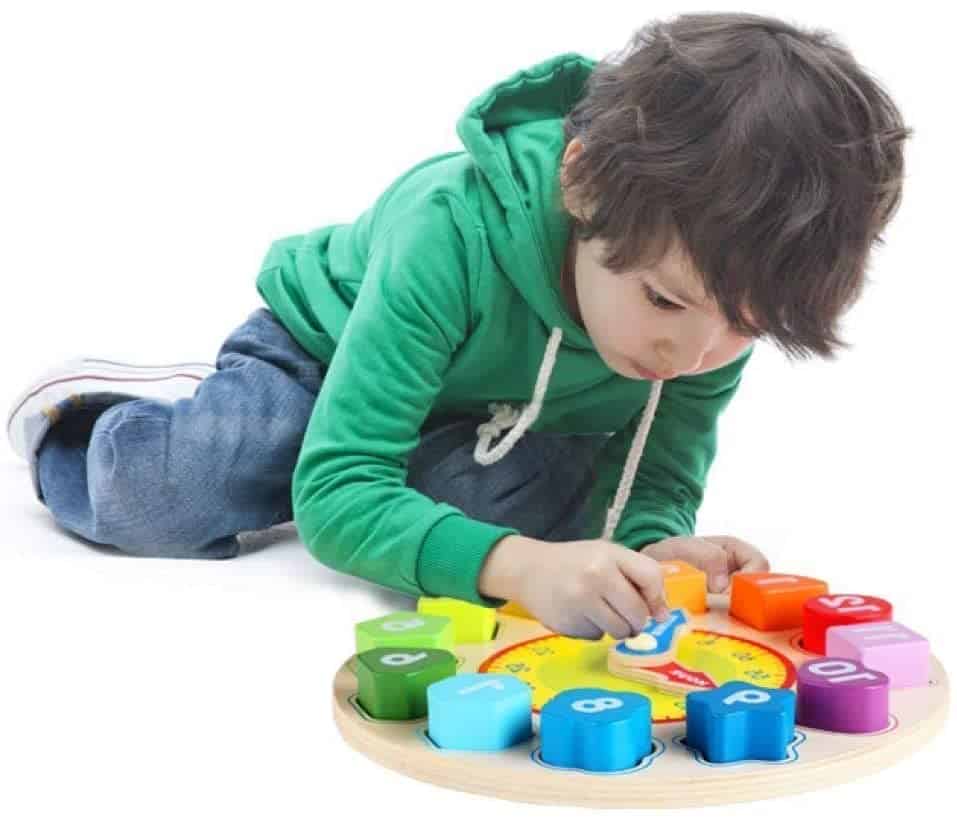
If your child is already a regular on the tablet, you can also teach him to watch the clock via an app. Here are a few examples:
- Jungle App: Learn full and half hours, quarters, five minutes and minutes. Choose which level, digital or analog.
- Telling time with Miss Jannie: Whole hours, half hours, quarters, five minutes and minutes. Here too you can read the time on an analog clock and on a digital clock. Miss Jannie also reads the time aloud, she does fun sums - for the clock - and also tells stories.
But if you just want to learn to watch the clock at the kitchen table, you can do so with the following games.
The educational magnet game from Janod is great fun for children from 3 to 7 years old.
The game has 75 magnets and 8 cards, printed on both sides. Open the book and use the magnets to check what is on the chosen card, including the digital time.
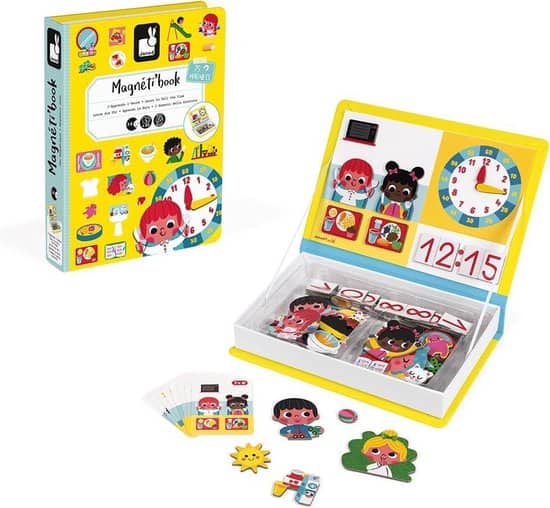
A memory clock game is also very educational. In addition to playing memory, your child also practices telling the time. Your child has to find the right clocks together.
It may be two of the same hand clocks or a digital time in combination with an analog clock. You can use the Melissa & Doug clock game I mentioned earlier for this.
When domino clock game - suitable for children from the age of 6 - your child must connect the correct clock with hands or the digital times; I like to play this game myself with my children and have found it very educational.
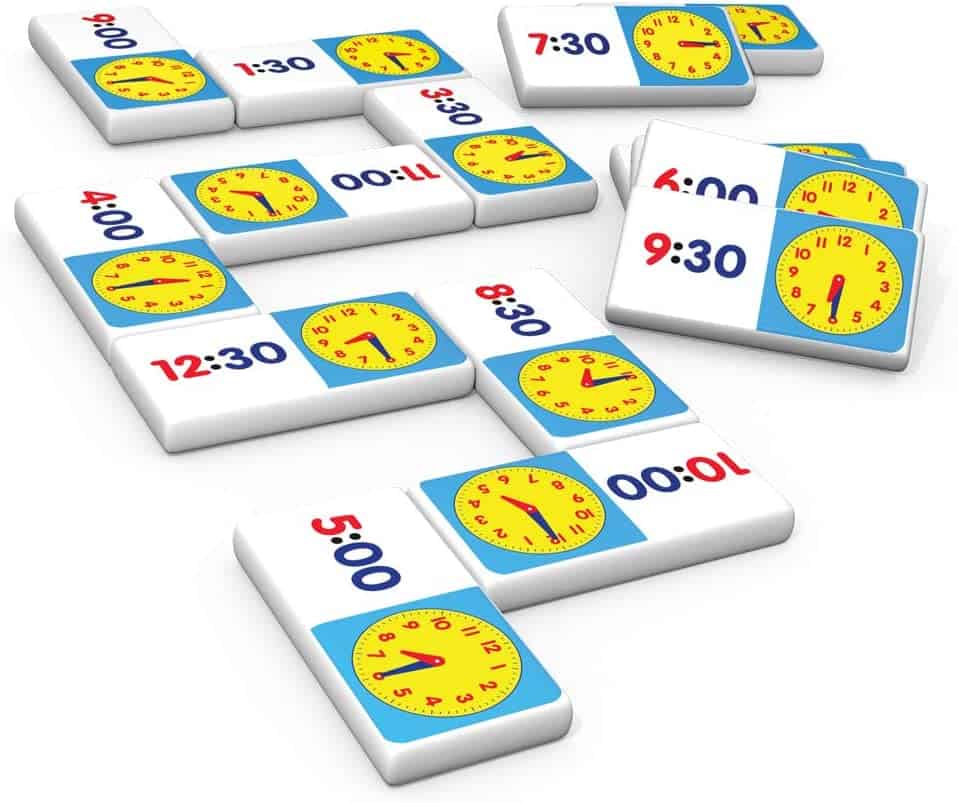
Then I also have a very nice exercise for you that teaches your child to tell the time and also make it move. Your child jogs in one place and you show a clock with a different time each time.
Your child lists the indicated times while jogging. Sometimes you provide a funny intermission, you instruct your child, for example, to turn around when the clock indicates 12.00:4 and to dance when the clock indicates XNUMX o'clock.
You can make the assignments as crazy as you want: jump like a frog or roar like a lion.
It is especially fun to play this game with several kids and turn it into a competition.
Conclusion
Let's face it, it's just nice once your child can tell the time. Good for the self-confidence of your child, because it makes him feel a bit more independent.
Your child will also realize that it is important to be somewhere on time. Good for you too, because gradually you are no longer entirely responsible for your child arriving on time.
Furthermore, it is of course useful if you can tell your child what time he has to be home, for example for dinner and also what time he has to get up.
It is important for your child to be able to tell the time both analog and digital.
Also read: What is educational toys for children | pay attention to these 5 things

Always something to do for the holidays or rainy day?
Play Choice now has the ultimate activity book collection, with over 60 pages of fun coloring pages and educational puzzles.
Joost Nusselder, the founder of Speelkeuze.nl is a content marketer, father and loves trying out new toys. As a child he came into contact with everything related to games when his mother started the Tinnen Soldaat in Ede. Now he and his team create helpful blog articles to help loyal readers with fun play ideas.